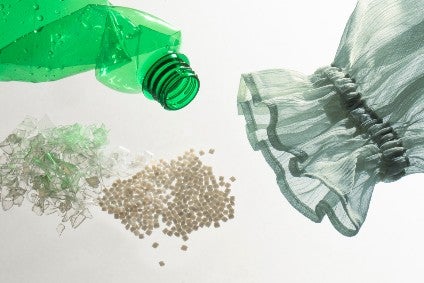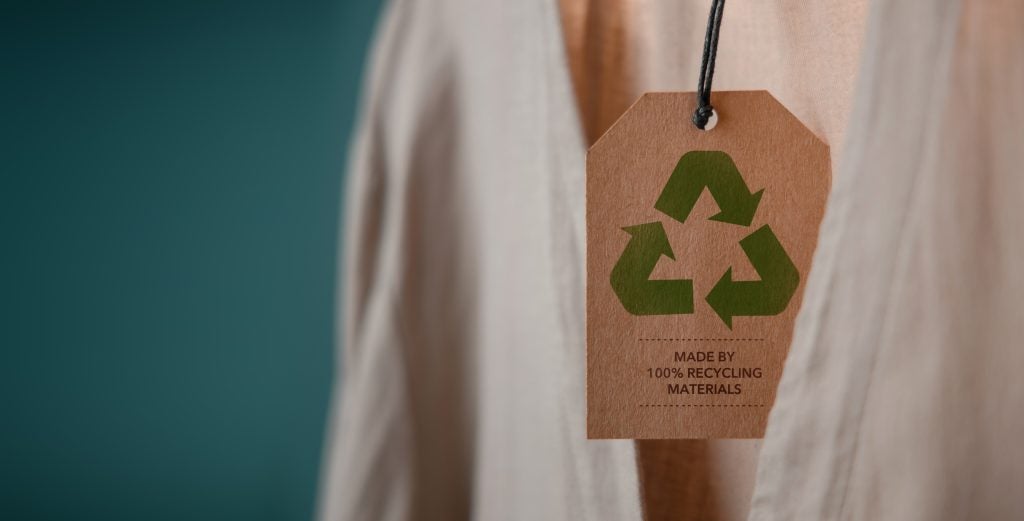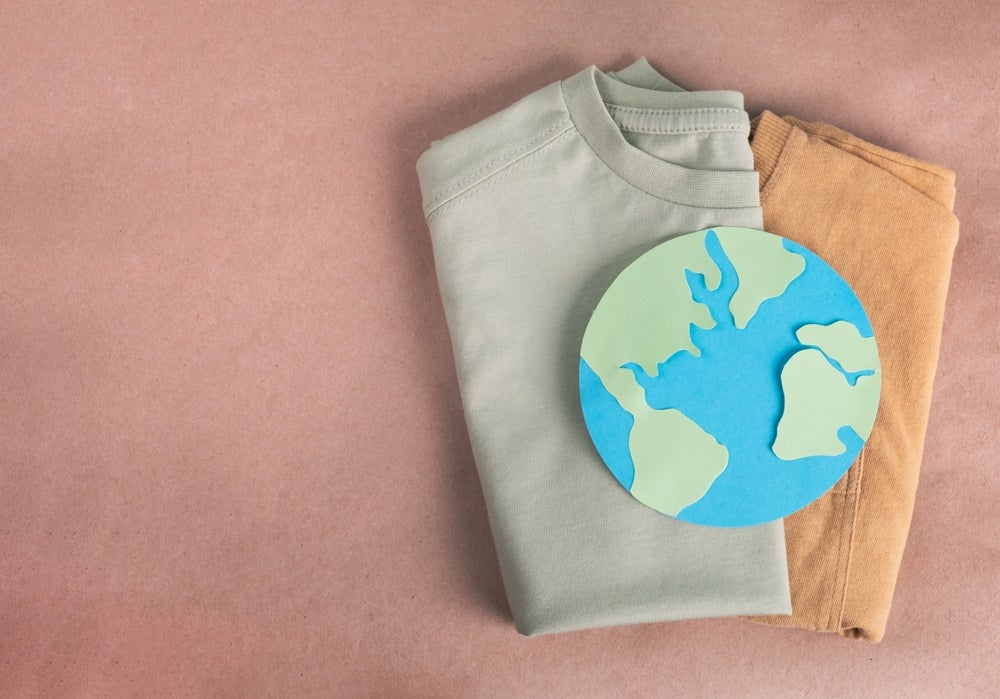
Swedish fashion giant H&M Group has signed a new pledge committing to accelerate the transition to a circular economy – which environmental sustainability manager Cecilia Brannsten tells just-style will be key to enabling a more resilient future for fashion.
The group, which operates the H&M, Weekday, COS, Arket, Monki, Afound, and & Other Stories brands, has joined hands with a number of retailers, policymakers, and NGOs in supporting the latest initiative from the Ellen MacArthur Foundation (EMF).
Published this week, the joint statement addresses the fashion, food, plastics, and finance sectors and aims to tackle global challenges including climate change, waste, and pollution, amid a recovery from the pandemic.
For fashion specifically, the plan is to ensure clothes are used more, are made to be made again, and are made from safe and renewable materials.
“The crisis puts a finger on the vulnerability of the current system and emphasises the importance of the systematic change that is required,” Brannsten tells just-style.
See Also:
“We have to use this devastating pandemic to rebuild in a better way so we can move toward a more resilient fashion industry. We believe the circular economy will be one of the most important tools to do this both to tackle the climate crisis and make sure that we create an industry where resources are treated responsibly and where we do not create waste.
How well do you really know your competitors?
Access the most comprehensive Company Profiles on the market, powered by GlobalData. Save hours of research. Gain competitive edge.

Thank you!
Your download email will arrive shortly
Not ready to buy yet? Download a free sample
We are confident about the unique quality of our Company Profiles. However, we want you to make the most beneficial decision for your business, so we offer a free sample that you can download by submitting the below form
By GlobalData“The Covid-19 crisis puts a finger on the vulnerability of the current system and emphasises the importance of the systematic change that is required”
“At the H&M Group we have a clear strategy and a direction to be fully circular and climate positive and now, more than ever, it is important that we continue that work and that we are committed to the transition that is required.”
The EMF initiative has also been backed by Inditex, Stella McCartney, World Wide Fund for Nature (WWF), WRAP UK, Laudes Foundation, and Global Fashion Agenda – as well as the likes of Nestle, Unilever, Danone, Coca-Cola, PepsiCo and Barclays Bank.
“This commitment is a great opportunity to join forces in a common message with other companies and governments as collaboration will be key in this transition,” Brannsten adds.
As a strategic partner to the Ellen MacArthur Foundation (EMF), H&M Group is working with the organisation on its Make Fashion Circular and Jeans Redesign initiatives as well as being a signatory to its New Plastic Economy Global Commitment.
It also has its own “ambitious” circular economy strategy and is working towards becoming climate neutral in its supply chain by 2030 and climate positive in its whole value chain by 2040. As part of these plans, the group has committed to reducing its own emissions by 40% by 2030, taking 2017 as a baseline, and to reducing emissions from purchased raw materials, fabric production and garments by 59% per product by 2030, also using 2017 as a baseline.
Brannsten tells just-style H&M is exploring all stages of its value chain as part of its strategy, from material selection to design and production.
“When we look at circularity in fashion, we look at how we design the product – ensuring the right durability and recyclability and the minimum negative impact on people and the environment – that we chose the right materials that should be safe both when they go in and when they come out and, of course, that we want to prioritise the use of recycled materials.
“We are also looking into how we can make sure that our products are produced with the minimum footprint in terms of water, chemicals and energy, and how we can enable our products to live for as long as possible so they never become waste; so it’s also about care and repair, re-commerce and rental.”
A joint effort
The new EMF initiative does not outline any specific targets but acts to underline the importance of accelerating the shift to a circular economy to “build back better” from the Covid crisis.
“It’s a way to reinforce the importance that we need to stand together and not lose pace coming out of the pandemic,” Brannsten explains.
Signatories are committed to accelerating the transition to a circular economy and creating solutions that combine economic opportunity with benefits to wider society and the environment.
The joint statement says the circular economy offers a pathway to recovery that does not turn attention away from other global challenges such as climate change and pollution. “By designing out waste, keeping products and materials in use, and regenerating natural systems, it creates vital opportunities for economic growth that also restore the environment, create jobs, and benefit society,” it reads.
For Brannsten, the circular economy provides opportunities for economic growth in areas related to new technology and innovations for both materials and recycling, including new sorting innovations that will help to close the textile loop and create circular material flows.
“We see that there’s a big potential in new circular business models that we have started to pilot such as our Take Care initiative within the H&M brand.” This scheme sees the retailer share tips online on how to “repair, remake and refresh” clothes to make them last longer.
It has also dipped a toe into the fast-growing rental market, partnering with China’s largest fashion rental platform YCloset to test subscription rentals from its COS brand and a similar trial in its native Sweden, which saw consumers hire select pieces from its 2012-2019 Conscious Exclusive collections.
The group is also exploring recommerce initiatives including selling used clothing in partnership with recommerce business Sellpy in which it took a majority stake last year.
In addition, H&M has funded circular innovations in raw materials, including Finnish start-up Infinited Fiber Company (IFC) through the group’s CO:LAB investment arm. Towards the end of last year, the Weekday brand became the first globally to create a garment with new sustainable fabric developed by IFC.
Looking ahead, Brannsten says the group’s agenda on making products circular – both when it comes to what it sells and the packaging it uses – will be “super important,” as will how it builds its stores.
“That will be an investment we will continue to make and will continue to explore new circular business models such as rental and recommerce.”
Materials
• All cotton to be sourced in a more sustainable way by 2020 (97% in 2019).
• With regards to its whole materials portfolio, the goal is that by 2030 all H&M Group’s materials should be either recycled or sourced in a more sustainable way (57% in 2019).
Packaging
• The group is working toward reducing its packaging across the value chain by 25% by 2025, having 2018 as a baseline.
• All of its packaging should be made from recycled or other sustainably sourced materials by 2030 and should be designed to be reusable, recyclable, or compostable by 2025.
Climate positive
• Climate-neutral in its supply chain by 2030 and climate positive in its whole value chain by 2040.
• 40% reduction in its own emissions by 2030, taking 2017 as a baseline.
• Reduce the emissions from purchased raw materials, fabric production and garments by 59% per product by 2030, taking 2017 as a baseline.
• To increase sourcing of renewable electricity from 95% in 2017 to 100% by 2030.







